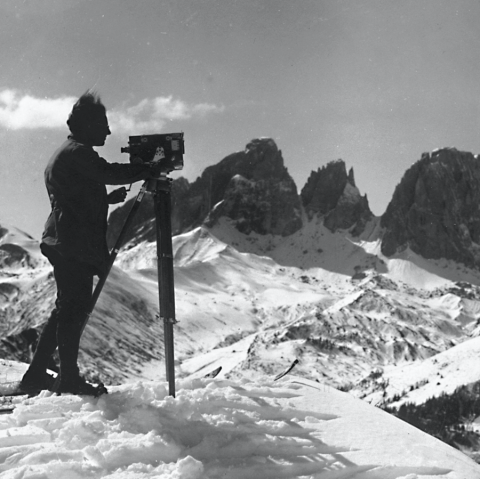
Movies have had a special place in the history of skiing, of course. Because motion picture cameras were invented just about the time skiing emerged as a sport in the Alps, snippets of footage exist all the way back to the years before World War I. There's even newsreel footage of alpine troops training in France and Austria.
But what is widely regarded as the very first commercial ski film was released 100 years ago, on December 23, 1920. Arnold Fanck’s “Das Wunder des Schneeschuhs” (The Wonder of Snowshoes) is a documentary following an expedition that climbs up to 4,200 metre (13,780 feet) high glacier slopes in the Swiss Alps. It then follows pioneering downhill skiers using the Arlberg System created by Hannes Schneider. Among other tricks and stunts skiers are shown leaping crevasses and even setting off small avalanches.
See Das Wunder Des Schneeshuhs.
The skills and bravery of the skiers filmed, the spectacular isolation of the high mountain winter landscape were beautifully portrayed in Fanck’s film and remain as visually stunning today as 100 years ago – even when viewed vias Youtube rather than on the big screen as intended.
Born in Germany in 1889, Fanck originally trained as a geologist. His love of mountain scenery took him to remote locations creating movies that were tremendously popular with German audiences. They became known as the "mountain films" genre with more filmmakers, including American director Tay Garnett, starting to make films a similar style.
Fanck co-founded the Berg and Sportfilm company (Mountain Sport Films) to create the movies and had a run of popular successes including The Holy Mountain (1926), The White Hell of Pitz Palu (1929), Storm over Mont Blanc (1930) and The White Ecstasy (1931).
In the 1930s Fanck is reported to have run in to problems with the rise of the Nazi regime after he initially refused to join the party instead working on a film called The Eternal Dream which had a French hero in the lead, was filmed in the French Alps and had a Jewish producer – all politically unacceptable in Germany at the time. –Patrick Thorne
Photo above: Arnold Fanck in 1925. Matthias Fanck archive.
